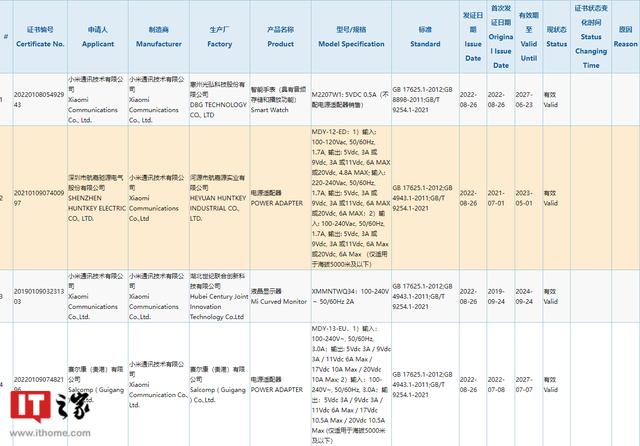镁基锂离子电池要用原镁吗 镁不胜收镁离子二次电池的研究历程与展望

全文速览本文深入总结了近些年来镁离子电池的研究进展,阐述了电极材料微结构与镁离子电池电化学性能之间的关系。重点讨论了包括插层型和转换型正极材料以及金属镁以外的负极材料。此外,还探索了其他镁基电池体系,包括镁空气电池、镁硫电池和镁碘电池。本综述也为高能量密度镁基可充电电池的发展提供了有价值的指导思想。
背景介绍化石燃料的燃烧造成了严重的环境问题,包括较差的空气质量和全球变暖。因此,具有低成本的可再生能源的和电网规模的储能对于可持续发展是必不可少的。大多数可再生能源,如风能、太阳能和潮汐能,都是间歇性的,受制于天气条件与地理环境。而锂离子电池(LIBs)是目前最普遍的电动汽车和便携式电子设备的储能装置,但是随着人们对可再生能源存储的需求日益增长,探索具有高能量密度的低成本的尖端电池系统势在必行。多价离子电池原理上可以提供比单价锂离子电池更高的能量密度, 而在这其中,镁离子电池具有体积容量大、还原电位低、材料成本低、金属镁负极无枝晶等优点。
最近,澳大利亚悉尼科技大学的汪国秀教授团队总结了镁离子电池的发展近况,包括镁离子电池的正极材料以及其他镁基储能技术。该文章发表在国际顶级期刊Advanced Energy Materials上(影响因子:24.884),论文第一作者为悉尼科技大学博士生郭子琪。悉尼科技大学汪国秀教授和苏大为高级讲师为共同通讯作者。
本文亮点A:将目前受关注度最高的镁离子电池插层型正极材料按照结构进行分类,并深入讨论了其插层/脱嵌过程中的发生的结构变化。同时,详细概述了转化型正极材料的反应机理,比较两种不同类型的正极材料之间的差异。
B:此外,总结了除金属镁以外的常用的镁离子电池负极材料。C:综合阐述了其他镁基储能技术,包括镁空气电池、镁硫电池和镁碘电池系统,并分别探讨了他们的工作机理与性能。图文解析

▲Figure 1. (a) Comparison of various characteristics of magnesium metal with other metallic anodes. (b) The working principle and (c) configuration of the rechargeable magnesium-ion battery. (d) Capacities vs. cut-off voltages of various cathode materials for rechargeable magnesium-ion batteries.

▲Figure 2. (a) Crystal models of Chevrel phase (CP) Mo6S8 with highly symmetric 3a, 3b, and 9d sites (viewed along the [211] direction). (b) Sublattice of 3a and 3b sites. (c) Inner-ring and outer-ring hopping between partially occupied outer and inner sites. (d) Schematic illustration of solid-state diffusion of Mg2 in the Chevrel phase (CP). TEM images of (e) magnesiated, and (f) demagnesiated RFC/V2O5 composites. (g) Capacity retention of MoO2F0.2 and MoO3 electrodes versus the cycle number. (h) Crystal structure and migration barrier of the layered TiS2. (i) XRD patterns and HRTEM images of G-MoS2.

▲Figure 3. (a) Crystal structure of spinel MgT2X4. Mg atoms are located at the yellow tetrahedral sites and the T atoms are located at the blue octahedral sites. (b) Crystal structure of spinel-MnO2. SEM and TEM images of MgMn2O4 (c and e) and MgMn2O4/rGO (d and f). (g, h) Galvanostatic discharge/charge voltage curves and cycling performance of C-Ti2S4 cells with an APC electrolyte at 60 °C.

▲Figure 4. (a) Crystal structure model, migration pathways, density plots and cell voltage from MD simulations of MgFeSiO4. The results show the enhanced intercalation Mg2 intercalation kinetics. (b) The hexagonal and monoclinic structure models of NASICON.

▲Figure 5. (a) X-ray near edge absorption structure (XANES) and X-ray absorption fine structure (EXAFS) spectra for α-MnO2 in various discharge/recharge states. (b, c) SEM and TEM images of Mg-bir/CC electrodes. Electrochemical performances of Mg-bir/CC electrodes: (d) voltage profile and (e) cycling performance at C/10 in 0.25 M Mg(TFSI)2/diglyme electrolyte.

▲Figure 6. (a) Diagram of the Mg2 intercalation and deintercalation processes of β-SnSb nanoparticles according to the TEM and DFT results. (b) Schematic illustration of a two-phase conversion reaction of Mg2 ions in the Mg3Bi2 alloy. (c) Galvanostatic discharge/charge voltage curves and (d) the cycling performance of full cells with 1 M LiTFSI−2 M Mg(TFSI)2/AN electrolyte.

▲Figure 7. (a) Typical structure and working principle of the Mg-air battery. (b) XRD patterns of three different Mg anode samples. (c-f) SEM and TME images of the commercial 3D GN/SWCNT microstructure and the Mn3O4 nanowires/3D GN/SWCNT composite. (g) Galvanostatic discharge/charge profiles of different Mg/air batteries measured at a current density of 0.2 mA cm−2 with a mixed electrolyte of Mg(NO3)2 (2.6 M) and NaNO2 (3.6 M) and different amounts of [P6,6,6,14][Cl] ionic liquid: (a) 0.5, (b) 1.0, and (c) 2.0 wt %.

▲Figure 8. (a) Schematic illustration of the preparation of ZIF-C and ZIF-C-S. (b) SEM image and (c) corresponding EDX mapping images of ZIF-C-S. (d) Galvanostatic discharge/charge profiles of ZIF-C-S at 0.1 C in (HMDS)2Mg-AlCl3-LiTFSI electrolyte.

▲Figure 9. (a) Schematic of rechargeable Mg-iodine batteries. (b) Synthesis procedure, SEM image and energy-dispersive spectroscopy mapping of the ACC/I2 electrode. (c) Cycling stability of the Mg-iodine battery at 0.5 C in 0.5 M Mg-HMDS electrolyte. (d) Rate capability of the ACC/I2 electrode in comparison with other works.
总结与展望本综述总结了现如今镁离子电池发展过程中遇到的一系列具有挑战性的问题。a)在大多数的电解液中,Mg2 的连续沉积通常会在负极上形成绝缘的表面层,从而在室温下抑制了相关的电化学反应。b)缺乏合适的正极材料使得Mg2 能够在室温条件下进行快速高效的插层/脱层。Mg2 的二电子价态和强的静电相互作用必然导致反应动力学的迟滞,从而引起了正极材料的性能衰减。c)电极和电解液之间的不相容性。传统的电解质和非水溶剂会形成不导电的SEI层,因此不适用于镁离子电池。而且,目前使用的电解液大多对空气敏感,腐蚀性强,易燃。最后,本文总结了未来镁离子电池的发展方向;一是提高电极与电解液在室温下的相容性。二是如何提高镁离子电池正极材料的反应动力学和热力学性能。
课题组介绍汪国秀教授任职悉尼科技大学清洁能源技术中心主任,特聘杰出教授。汪教授致力于能源材料领域的研发,并在包括材料工程、材料化学、电化学能量储存转换、纳米科技, 先进材料的合成与制造等多个跨学科领域取得了优异的成果。汪教授主持完成二十多项澳大利亚基金委和工业界的项目。迄今为止,汪教授已发表SCI论文超过510篇, 引用超过380000次,h因子107。2018年全球材料和化学双学科高被引科学家(Web of Science/Clarivate Analytics). 英国皇家化学会会士 (FRSC) 和 国际电化学学会会士(ISE fellow)。
课题组网页链接:
https://www.uts.edu.au/research-and-teaching/our-research/centre-clean-energy-technology
,免责声明:本文仅代表文章作者的个人观点,与本站无关。其原创性、真实性以及文中陈述文字和内容未经本站证实,对本文以及其中全部或者部分内容文字的真实性、完整性和原创性本站不作任何保证或承诺,请读者仅作参考,并自行核实相关内容。文章投诉邮箱:anhduc.ph@yahoo.com






